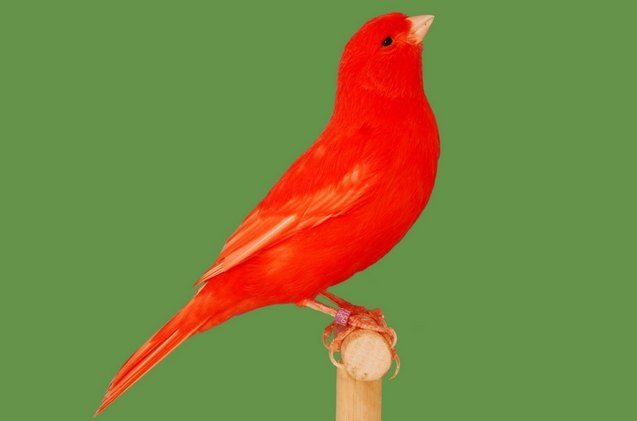Red Factor Canary


About Red Factor Canary
It’s no secret that canaries are amongst the most colorful bird breeds. Many of them were mixed and bred with the primary goal of attaining a beautiful, vivid color that is entirely unlike any of the other canary species. One of these breeds is the Red Factor Canary, a successful mix of the common Yellow canary and the rare Venezuelan Red Siskin. The resulting bird became a worldwide sensation, which is owed mainly to its captivating and bright red color – the unique and distinguishing aspect that makes this bird a sight to behold!
The brilliant crimson hue of the feathers and the melodious singing of the Red Factory Canary leaves no one indifferent.
Native Region/Natural Habitat
The process of selecting and successfully creating a new canary breed was always a challenging task, ever since the species was discovered on the Macaronesian islands, and subsequently domesticated. The first success in the breeding of Red Factor Canaries was achieved in Britain in the 1930’s, and these lovely birds soon spread across the rest of Europe and the Americas as a popular and sought after pet. They are usually available through most pet stores and bird shows, as their popularity is still high.
Similar to other canary breeds, the Red Factor will grow to about 5.5 inches (14 centimeters) in length. Due to slight variations in the depth of the red color of their feathers, this breed is divided into two sub-classes, the Melanin and the Lipochrome. These were mainly created to distinguish the specific brightness of the coloration in some birds.
Although not too robust in size, they are still hardy and strong birds that will do well under most common circumstances. With enough care and attention, they will be easy to breed and look after.
More so than the females, the male canaries are sure to produce an intricate and lively weave of melodies. That’s why the males often have a cage of their own, where they can fully express the natural talent that makes them one of the best singing birds. Their melody has a full and natural sound that is always pleasing to hear and is hard to become tiring or a nuisance. Its relaxing tone and subtleness will surely bring a dose of calm into a busy and bustling home.
As the name suggests, the Red Factor Canaries sport an overall color that is more than often a deep and burning shade of red. This vivid tone gives this bird a majestic and powerful look. With its striking color, this canary will become a little red spark of liveliness that is sure to bring a smile to your face.
The variations of the red color are present, although subtle. Some birds tend to have a lighter shade bordering orange, while others retain a prominent crimson red.
The Red Factor canary owes its name to the vibrant and deep red color of its feathers – a shade guaranteed to leave an impression.
Like most other canaries, the Red Factor’s diet will consist mainly of various seeds. Most commercial seed mixes are suitable for this breed as they already contain all the necessary goodies and nutrients. Also, don’t hesitate to add a bit of fresh vegetables to their daily diet, to boost their intake of vitamins and fiber.
Their intense red color can be maintained with certain additions to their diet in the form of fresh tomatoes, berries, paprika, and beets. These predominantly red vegetables contain important carotenoid chemicals that will benefit your bird and its vivid color.
Canaries are well-rounded birds and will do good in many common conditions. Provided sufficient basic care, they will thrive without any special needs or problems. The main threats to their health are usually damp and drafty places, lousy hygiene, carelessness and improper diet. Keep your eyes peeled for the main indications that something might be wrong. For example, as a lively and singing bird, a canary that is overly silent and shows apathy is sure to be ill. Ruffled feathers, eye sores, and similar signs will tell you your canary needs to see a vet.
With enough space and sufficient looking after, your Red Factor Canary will be a hardy, happy bird.
These canaries are known to be gentle and lively, without producing too much noise and ruckus. Make sure their cage is roomy and provide them with a perch, a swing or an artificial branch. They don’t require too much interaction, and even when alone, they will sing their lovely melody. Putting two males in a small space can result in territorial fights, so males are often kept on their own.
Photo credit: Wikimedia Commons

A proud mama to seven dogs and ten cats, Angela spends her days writing for her fellow pet parents and pampering her furballs, all of whom are rescues. When she's not gushing over her adorable cats or playing with her dogs, she can be found curled up with a good fantasy book.
More by Angela Vuckovic

























